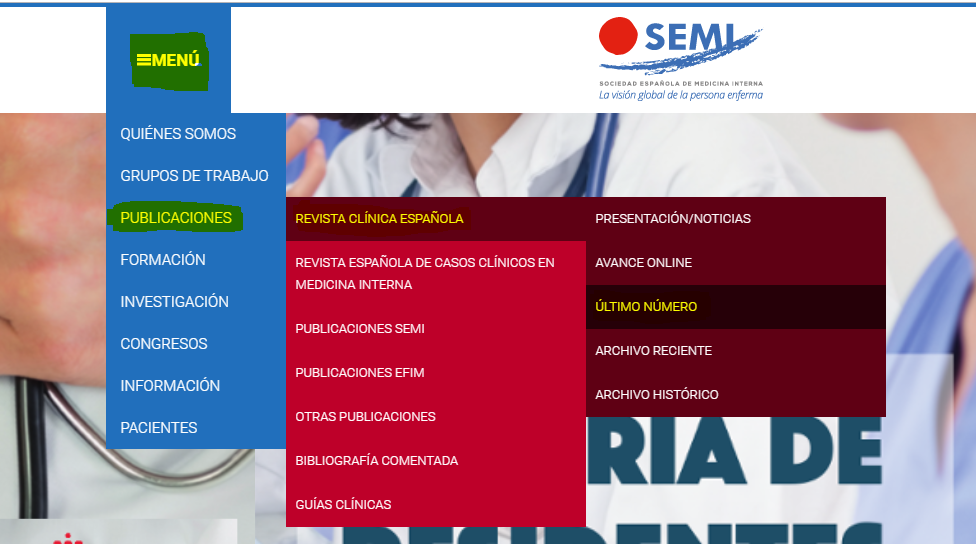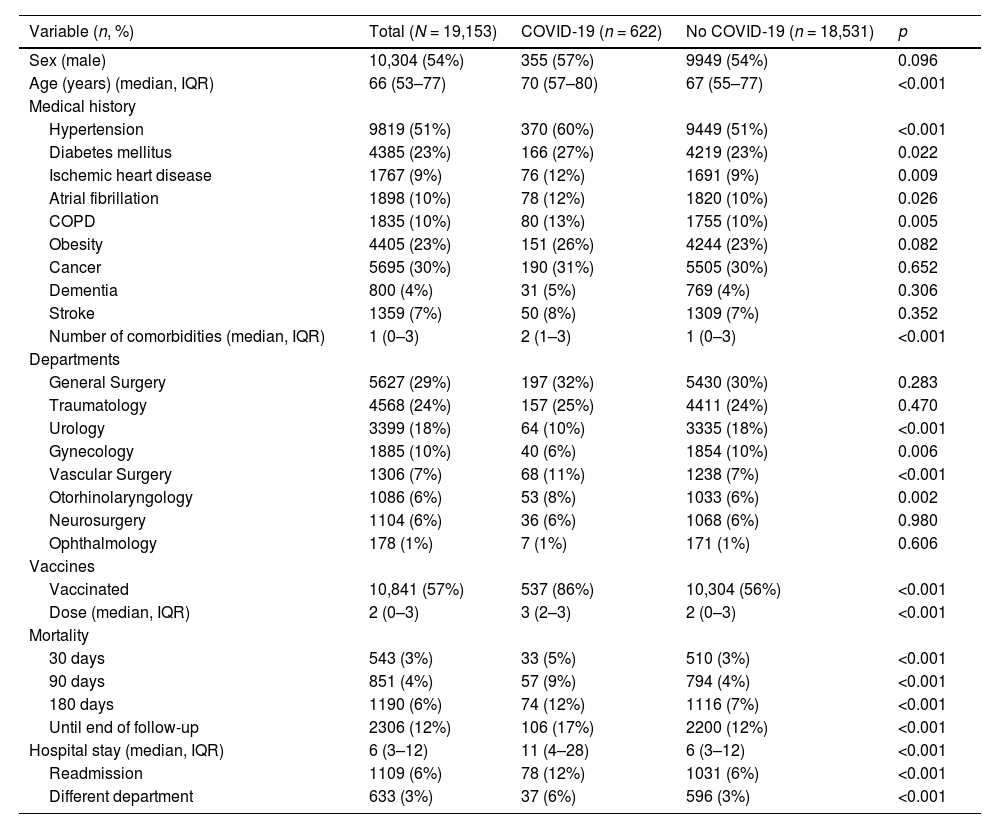perioperatively acquired COVID-19 may increase mortality. The aim of this study was to assess the influence of SARS-CoV-2 infection on the length of stay and mortality among surgical patients.
Methodsretrospective study of surgical interventions performed between 1st March 2020 and 31st December 2022 after exclusion of minor procedures. Clinical, administrative, and epidemiological data were collected. Multivariate Cox regression analysis was conducted.
Results19,152 interventions were included. Patients had median age of 66 years (53–77), 53.8% were male, and the median number of conditions was 1 (0–3). Six hundred and twenty-two (3.2%) interventions were performed in COVID-19 patients, who were older (70 (57–80) vs 67 (55–77) years; p = 0.003) and more comorbid (2 (1–3) vs 1 (0–3); p < 0.001). COVID-19 patients had longer stays (11 (4–28) vs 6 (3–12) days; p < 0.001), and higher mortality rates (incidence rate ratio 2.28 (1.70–3.00), p < 0.001). The adjusted hazard ratio was 1.54 (1.15–2.05), p = 0.001. Age, number of conditions, and incomplete vaccination, and surgeries conducted in 2022 (as compared to 2020 and 2021) were related to higher mortality. Mortality was higher during the first week of the infection, but not after that (HR 2.09 (1.04–4.21), p = 0.037), and the risk window narrowed after 2020.
Conclusionsperioperative COVID-19 increases mortality, especially during the first week of the infection. Age, comorbidity, and vaccine status should also be considered when scheduling interventions.
la adquisición de COVID-19 durante el periodo perioperatorio puede aumentar la mortalidad. El objetivo del estudio fue analizar la influencia de la infección por SARS-CoV-2 en la estancia y mortalidad en pacientes quirúrgicos.
Métodosestudio retrospectivo de las intervenciones practicadas del 1 de marzo de 2020 al 31 de diciembre de 2022, excluyéndose procedimientos menores. Se recogieron datos clínicos, administrativos y epidemiológicos. Se realizó un análisis de supervivencia mediante regresión de Cox.
Resultadosse incluyeron 19152 intervenciones. La mediana de edad fue 66 (53–77) años, 53,8% eran varones y la mediana de comorbilidades fue 1 (0–3). Seiscientas veintidós (3,2%) intervenciones tuvieron lugar en pacientes con COVID-19, siendo más ancianos (70 [57–80] vs 67 [55–77] años; p = 0,003) y comórbidos (2 [1–3] vs 1 [0–3]; p < 0,001). Además, su estancia fue mayor (11 [4–28] vs 6 [3–12] días; p < 0,001). La mortalidad fue mayor en pacientes con COVID-19 (razón de tasas de incidencia 2,28 [1,70−3,00], p < 0,001), con una hazard ratio (HR) ajustada de 1,54 (1,15−2,05), p = 0,001. La edad, el número de comorbilidades, la falta de vacunación y las intervenciones durante 2022 (respecto 2020 y 2021) tuvieron peor pronóstico. La mortalidad fue mayor en los intervenidos durante la primera semana de la infección (HR 2,09 [1,04–4,21], p = 0,037), pero no después y la ventana de riesgo fue más amplia en 2020.
Conclusionesel COVID-19 perioperatorio parece ser un factor de riesgo para mortalidad especialmente durante primera semana. La edad, la comorbilidad y el estado vacunal también deben tenerse en cuenta para programar las cirugías.
Article
Diríjase desde aquí a la web de la >>>FESEMI<<< e inicie sesión mediante el formulario que se encuentra en la barra superior, pulsando sobre el candado.

Una vez autentificado, en la misma web de FESEMI, en el menú superior, elija la opción deseada.

>>>FESEMI<<<










